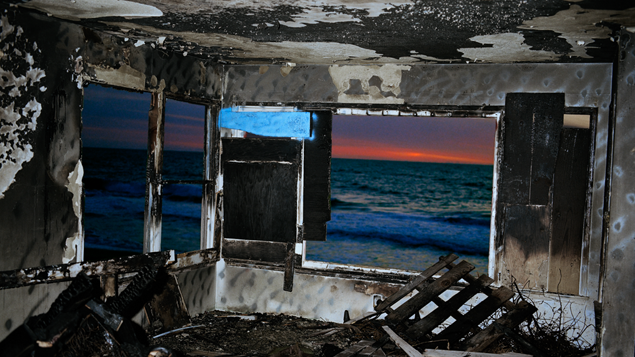
Nyhet -
Gratis foredrag: Fotografi og Sci-Fi
Velkommen til foredraget ”Los Angeles - A Speculative Fiction” med den britiske kunsthistorikeren Andrew Witt torsdag 10.november Kl.18! Foredraget er gratis, åpent for alle og holdes på engelsk.
I dette foredraget forteller Witt om hvordan John Divolas fotografiske serier fra 1970-tallet som "MGM Lot" og "Zuma" er direkte inspirert av sci-fi scenografi av apokalyptiske landskap. John Divolas fotografier av forlatte hus og nedslitte interiører har vært omtalt som en «katastrofal fiksjon» og fremstår omtrent som scenografien i en apokalyptisk katastrofefilm fra Hollywood. Serien Zuma (1977-79) ble påbegynt da Divola brøt seg inn i forfalne strandhus og benyttet interiørene som lerret for maleriske eksperimenter, som han så dokumenterte gjennom fotografi. Serien nå kan sees i utstillingen «Los Angeles - A Fiction«.
Mer om foredraget:
There is a series of photographs shot between 1979 and 1980 by Los Angeles photographer John Divola of New York City pictured from the perspective of the near-future. This particular ‘New York’ is a New York constructed, imagined and fabricated on the sprawling backlot of MGM Studios in Culver City, Los Angeles. Divola’s ‘New York’ is aCalifornian New York. The backlot was modeled after New York City during its fiscal crisis of the early 1970s, but was also constructed and used for a number of post-apocalyptic films situated in the imagined future. The films Soylent Green (1973) and The Ultimate Warrior(1975) envision New York through the lens of scarcity: a future where the entire city and all of its resources have been exhausted.
Months before Divola embarked on his photographs of the MGM backlot, Divola completed Zuma (1977-78), a series of photographs shot within an abandoned beach-front property on Zuma Beach, Malibu. Divola’s series reworked an earlier project, Vandalism (1974-75), where the artist, without access to a studio, spray-painted and later photographed a collection of swirls, dots, and lines within a group of abandoned Los Angeles interiors. For Zuma, Divola photographed the interior in the late evenings and early mornings with a low-powered flash. In Divola’s series, the axial light of the camera is placed in contrast to the low angled, petrochemical light of a Los Angeles sunset. Structurally, the house appears as if it were afloat, catastrophically, drifting unmoored on an apocalyptic sea.